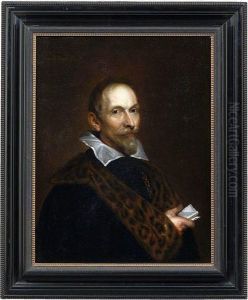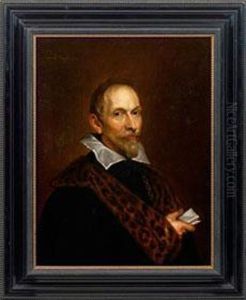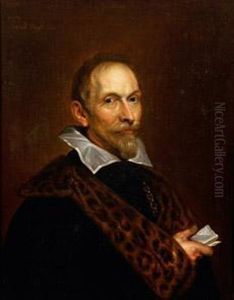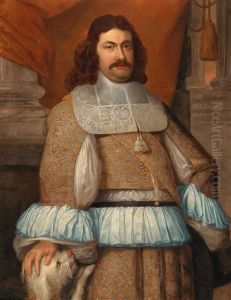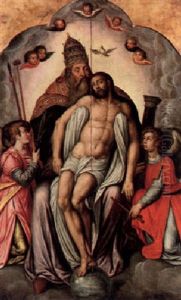Frans Denys Paintings
Frans Denys was a Flemish painter born in Antwerp in 1610. His artistic career unfolded during the Baroque period, which was characterized by dramatic expression, deep color, and intense light and dark shadows. Denys was part of the flourishing artistic environment of Antwerp, which was a significant center for art and commerce during the 17th century. Although not as well-known as some of his contemporaries like Peter Paul Rubens or Anthony van Dyck, Denys contributed to the rich tapestry of Flemish art with his own unique style and works.
Frans Denys received his artistic training in the workshop of Frans Francken the Younger, another prominent painter of Antwerp at the time. This apprenticeship would have provided him with a solid foundation in the techniques and styles prevalent in Flemish art. He became a master in the Guild of St. Luke in Antwerp in 1638, which was a typical career milestone for artists of the era, signifying his professional status and allowing him to take on students and commissions.
Denys specialized in portrait painting, which was a highly sought-after art form among the wealthy and influential citizens of the time. His portraits are known for their elegance and attention to detail. He portrayed his subjects with a certain realism and psychological depth that was appreciated by his clientele. Denys' work as a portraitist would have involved capturing the likeness and character of his sitters while also adhering to the conventions of Baroque portraiture, which often included richly decorated settings and an emphasis on the status and wealth of the individual.
Despite his skills and contributions to the Flemish art scene, Frans Denys did not achieve the same level of fame as some of his contemporaries. The reasons for this could be manifold, including the overshadowing presence of more dominant figures in Flemish art, fewer surviving works, or perhaps a lack of documentation regarding his life and work. Nonetheless, he remained an active artist in Antwerp until his death in 1670.
The legacy of Frans Denys lies in the portraits that have been attributed to him, which help to provide insight into the cultural and social milieu of 17th century Flanders. Today, his works are considered part of the broader narrative of Flemish Baroque painting and are studied by art historians interested in this period. Although not as prolific or revolutionary as some of his peers, Frans Denys still represents the skilled craftsmanship and artistic traditions that were prevalent in his hometown of Antwerp.
